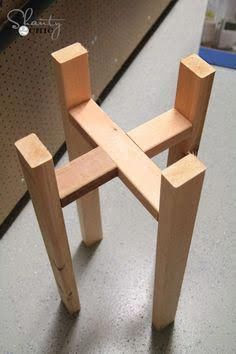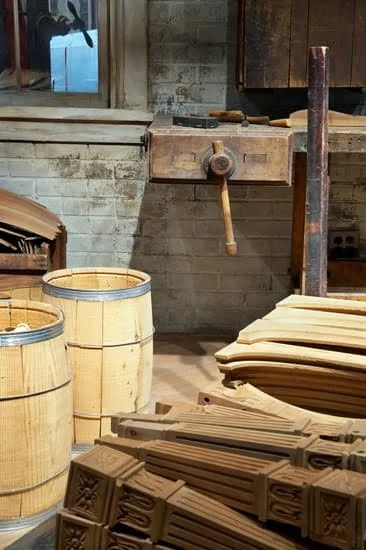Woodworking has seen a resurgence in popularity in recent years, with many individuals turning their passion for working with wood into fulfilling careers. As more people seek out unique, handmade items and appreciate the craftsmanship that goes into creating them, the demand for skilled woodworking professionals continues to rise. From cabinet makers to woodcarvers, there are diverse opportunities available for those interested in pursuing a career in woodworking.
One might ask, what are some woodworking jobs that offer creative freedom and a chance to work with their hands? Cabinet makers play a crucial role in crafting custom cabinets for various spaces like kitchens and bathrooms. Furniture makers use different wood types to design and build one-of-a-kind pieces that showcase both artistry and functionality. Wood carvers specialize in creating intricate sculptures, decorations, and architectural details that highlight the natural beauty of wood.
For those who enjoy working on a lathe, wood turning offers an opportunity to create bowls, vases, and other objects by shaping wood into unique forms. Joiners focus on creating joints and woodwork for construction projects like doors, windows, and staircases. Finish carpenters add the final touches to woodworking projects through trim work, molding installation. Experienced woodworkers can also share their skills as woodworking instructors by teaching classes or workshops to pass on their knowledge to future generations of crafters.
Cabinet Maker
Woodworking jobs offer a wide range of opportunities for those with a passion for working with wood. One popular woodworking job is that of a cabinet maker. Cabinet makers play a crucial role in creating custom cabinets for various spaces, such as kitchens, bathrooms, and offices. These skilled craftsmen transform raw materials into functional and aesthetically pleasing storage solutions that meet the specific needs and preferences of their clients.
Some of the key responsibilities of cabinet makers include taking accurate measurements, selecting suitable wood materials, constructing cabinets using specialized tools, and applying finishes to enhance the appearance and durability of the final product. Here are some specific tasks that cabinet makers often perform:
- Designing cabinet layouts based on client requirements
- Cutting and shaping wood pieces to create cabinet components
- Assembling cabinets using techniques like doweling, gluing, or screwing
- Installing hardware such as hinges, knobs, and handles
- Applying stains, paints, or varnishes to achieve the desired finish
Cabinet making requires a combination of technical skills, creativity, attention to detail, and problem-solving abilities. As demand for custom cabinetry continues to rise in both residential and commercial sectors, cabinet makers have excellent job prospects in this specialized field. Whether working independently or as part of a team in a woodworking workshop or manufacturing facility, cabinet makers play an essential role in turning design concepts into functional storage solutions that enhance the beauty and functionality of interior spaces.
Furniture Maker
When it comes to furniture making, there are various specialized techniques and tools that professionals use to shape, assemble, and finish their creations. Some common methods include joinery for connecting different pieces of wood, carving for adding intricate details, and finishing techniques like staining or painting to enhance the beauty of the final product. Furniture makers often work closely with clients to understand their preferences and create custom pieces that meet both functional needs and aesthetic desires.
One of the most rewarding aspects of being a furniture maker is the ability to see a project through from conception to completion. Whether it’s crafting a sleek modern table, a rustic farmhouse dresser, or an elegant upholstered chair, furniture makers have the opportunity to showcase their skills and leave a lasting impact on the spaces they furnish.
With the demand for handcrafted furniture on the rise, aspiring woodworkers considering this career path can look forward to a fulfilling journey filled with creativity, craftsmanship, and endless possibilities.
- Designing unique pieces of furniture
- Working with various wood types
- Using specialized techniques like joinery and carving
Wood Carver
Wood carving is a timeless art form that requires precision, patience, and creativity. Wood carvers use specialized tools to sculpt wood into intricate designs that can be used in various applications. From creating decorative sculptures to embellishing architectural details, wood carving offers a wide range of opportunities for skilled artisans. Many wood carvers work on commissioned pieces for clients, while others create original artwork for galleries and exhibitions.
One of the most common applications of wood carving is in creating sculptures. Wood carvers can carve figures, animals, or abstract designs from solid blocks of wood, showcasing their artistic talent and attention to detail. These sculptures can range in size from small handheld pieces to larger-than-life installations. Some wood carvers also specialize in relief carving, where the design is carved into the surface of the wood to create a three-dimensional image.
In addition to sculptures, wood carvings are also used for decorative purposes in various settings. Intricately carved panels, trim work, and accents can add a touch of elegance and sophistication to furniture pieces, cabinetry, and architectural elements.
Wood carvings can be found adorning doors, mantels, frames, and staircases, enhancing the overall aesthetic appeal of the space. The beauty of wood carving lies in its ability to transform simple pieces of wood into works of art that elevate the design of any environment.
| Wood Carving Applications | Examples |
|---|---|
| Sculptures | Figurative sculptures |
| Decorative Panels | Trim work on furniture |
| Architectural Details | Carved accents on doors |
Wood Turner
Woodturning is a captivating art form within the realm of woodworking that involves shaping wood on a lathe to create various objects such as bowls, vases, and other decorative pieces. What sets woodturning apart is the unique process of using a lathe machine to rotate the wood while cutting and shaping it with precision tools. This craft requires skill, patience, and creativity as craftsmen manipulate the wood to bring their visions to life.
One of the key aspects of woodturning is selecting the right type of wood for each project. Different woods offer varying characteristics such as color, grain pattern, and hardness, which can significantly influence the final outcome of the turned piece. For example, some woods like maple or cherry are popular choices for creating intricate details due to their fine grain structure, while others like walnut or oak provide a rich tone and durability suitable for functional items.
Furthermore, woodturners employ a range of techniques and tools to achieve desired shapes and designs in their creations. From spindle turning for crafting long, slender forms like table legs or candlesticks to faceplate turning for producing bowls or platters with wide surfaces, each method requires specific skills and attention to detail.
Additionally, accessories like chisels, gouges, and parting tools are used to refine curves, create intricate patterns, and hollow out interiors in the turned objects. The versatility of woodturning allows artisans to explore endless possibilities in transforming raw wood into exquisite works of art.
| Wood Turning Facts | Details |
|---|---|
| Main Tools Used | Chisels, gouges, parting tools |
| Popular Wood Choices | Maple, cherry for details; walnut, oak for durability |
| Techniques | Spindle turning (table legs), faceplate turning (bowls) |
Joiner
Skills and Responsibilities
Joiners need to have a deep understanding of woodworking principles, including different joinery techniques that are used to connect pieces of wood securely. They must be skilled in measuring, cutting, shaping, assembling, and finishing wood to meet specific project requirements. Attention to detail is paramount as joiners are responsible for ensuring that all components fit seamlessly together and function properly.
Collaboration With Other Trades
In many construction projects, joiners collaborate closely with architects, contractors, designers, and other tradespeople to bring a cohesive vision to life. They must be able to interpret technical drawings and blueprints accurately to execute complex designs. Communication skills are vital as they need to coordinate their work with other professionals on the job site efficiently.
Joiners have the opportunity to showcase their craftsmanship in both residential and commercial settings by contributing their expertise to create functional and aesthetically pleasing spaces. For individuals interested in woodworking jobs that involve structural applications and working on large-scale projects, pursuing a career as a joiner can be both challenging and rewarding.
Finish Carpenter
Trim Work Installation
One of the primary tasks of finish carpenters is to install trim work, which includes baseboards, crown molding, chair rails, and wainscoting. Trim work not only adds visual appeal to a space but also covers gaps between different materials for a seamless finish.
Finish carpenters use precision cutting tools and techniques to measure, cut, and install trim pieces according to specific design plans. They pay close attention to detail to ensure that each piece fits perfectly and complements the overall look of the project.
Molding Design and Installation
Another essential aspect of a finish carpenter’s job is designing and installing molding. Molding can be used to add decorative elements to ceilings, walls, doors, windows, and furniture. Finish carpenters may work with different types of molding materials such as wood, MDF (medium-density fiberboard), or polystyrene foam. They use their creativity and craftsmanship skills to create intricate designs that enhance the beauty of a space. Installing molding requires precise measurements, angles cuts, and expert finishing techniques.
Furniture Assembly
In addition to trim work and molding installation, finish carpenters may also be involved in the assembly of furniture pieces. Whether it’s attaching drawers to cabinets or securing legs on tables, finish carpenters are responsible for ensuring that every component is properly assembled according to design specifications.
Their attention to detail is crucial in guaranteeing structural integrity and visual coherence in the final product. Collaborating with other woodworking professionals like cabinet makers or furniture designers is common in this aspect of their job.
Overall,
Woodworking Instructor
One of the key responsibilities of a woodworking instructor is to create lesson plans that cater to students of different skill levels, interests, and learning styles. They may design projects that allow beginners to practice basic joinery techniques or challenge advanced students with intricate designs that push their creativity and craftsmanship. Instructors also provide demonstrations, offer constructive feedback, and encourage students to explore new methods and approaches to woodworking.
In addition to teaching technical skills, woodworking instructors often emphasize safety practices in the workshop to ensure that students can work with wood safely and confidently. They may cover topics such as proper tool handling, equipment maintenance, dust control measures, and first aid procedures in case of accidents.
By instilling a culture of safety consciousness among their students, woodworking instructors contribute to creating a supportive learning environment where everyone can enjoy the craft without compromising their well-being. Overall, becoming a woodworking instructor not only allows experienced woodworkers to share their passion for the craft but also helps cultivate the next generation of skilled artisans who will continue pushing the boundaries of creativity in woodworking.
Conclusion
Woodworking offers a wide range of career opportunities for individuals with a passion for crafting beautiful and functional pieces from wood. From cabinet makers to furniture makers, wood carvers to wood turners, joiners to finish carpenters, the field of woodworking is rich with diverse options for those looking to turn their love of working with wood into a fulfilling profession.
Each woodworking job brings its unique set of skills, challenges, and rewards, making it an exciting and dynamic field to be a part of.
For those who have an eye for detail and precision, becoming a joiner or a finish carpenter may be the perfect fit. Crafting intricate joints or adding the finishing touches to woodworking projects require patience, skill, and expertise.
On the other hand, individuals with a flair for creativity and artistry may find fulfillment in pursuing careers as wood carvers or furniture makers. The ability to transform a simple piece of wood into a stunning sculpture or a beautiful piece of furniture is truly rewarding.
Whether you are just starting your journey in the world of woodworking or looking to advance your career in this field, there are plenty of opportunities available for you to explore. From honing your craft as a woodworking instructor to specializing in niche areas such as custom cabinetry or architectural woodwork, the possibilities are endless.
So if you have ever wondered “What are some woodworking jobs?” now is the time to roll up your sleeves, pick up your tools, and dive into this creative and rewarding field where every piece crafted holds the promise of turning your passion into a profession.
Frequently Asked Questions
What Is the Highest Paid Woodworking Job?
The highest paid woodworking job often tends to be custom furniture making for high-end clients or luxury brands. These skilled craftspeople create unique, intricate pieces that command a high price due to the quality of workmanship and materials used.
What Can You Do as a Woodworker?
As a woodworker, there are a variety of tasks you can undertake depending on your skills and interests. You can specialize in furniture making, cabinetry, carpentry, wood carving, or even restoration work. Woodworkers also have the opportunity to teach classes, write books or articles about woodworking, and sell their creations online or at craft shows.
What Is a Person Who Works With Wood?
A person who works with wood is commonly referred to as a woodworker. This term encompasses individuals who engage in various woodworking activities such as carpentry, furniture making, woodturning, carving, and more. Woodworkers use their skills and creativity to transform raw materials into functional or decorative pieces using traditional hand tools or modern machinery.

Hi everyone! I’m a woodworker and blogger, and this is my woodworking blog. In my blog, I share tips and tricks for woodworkers of all skill levels, as well as project ideas that you can try yourself.





